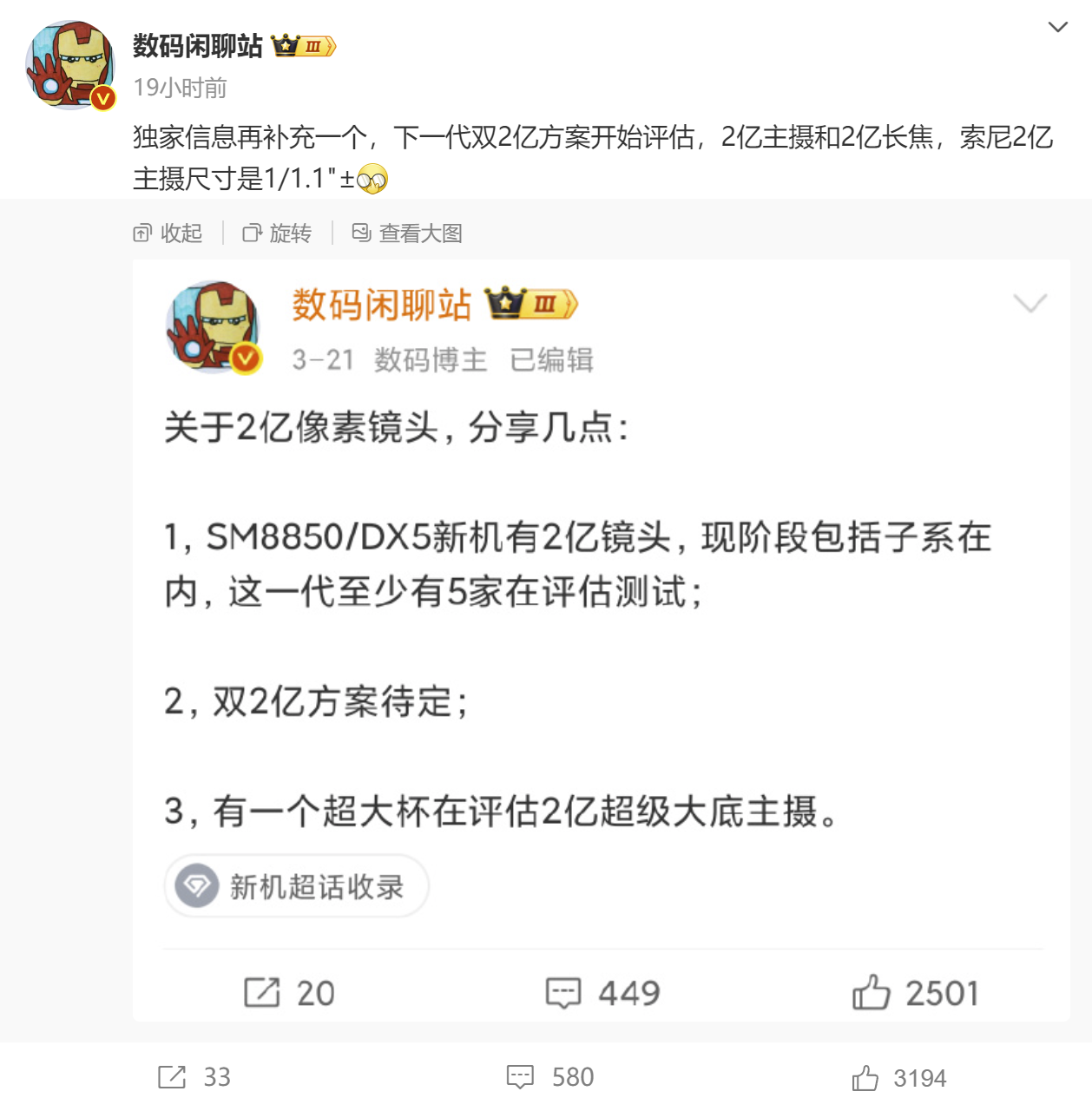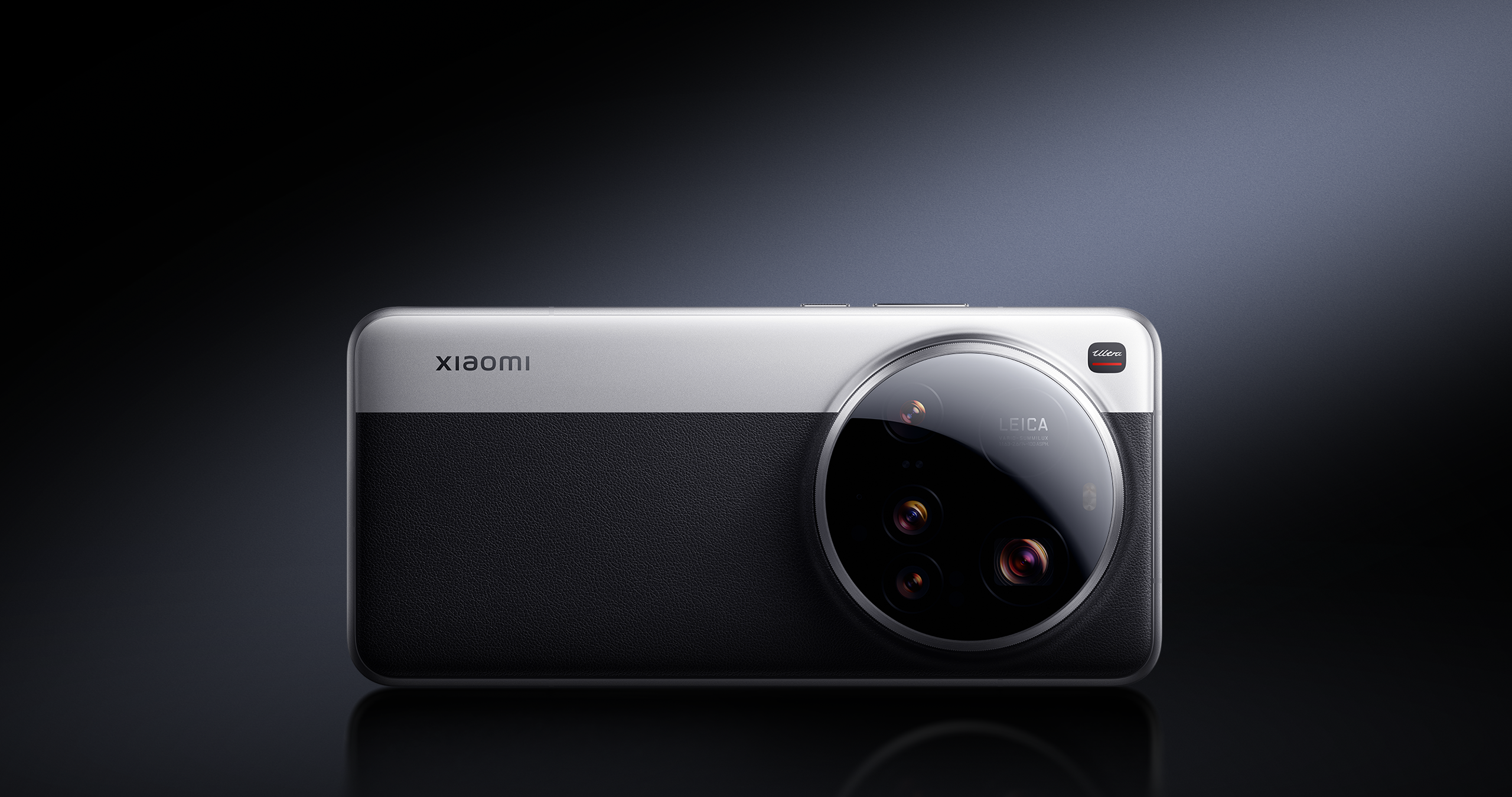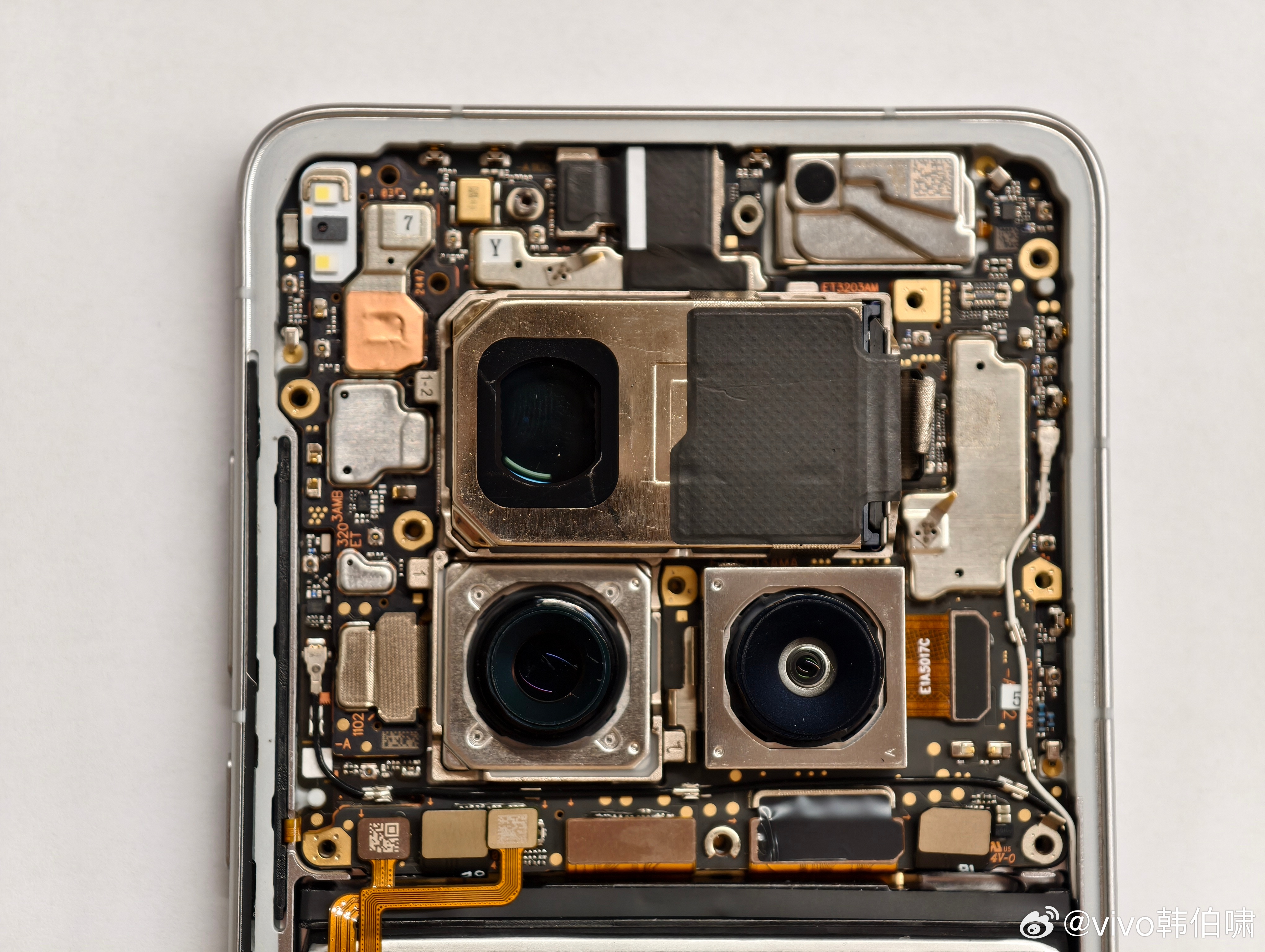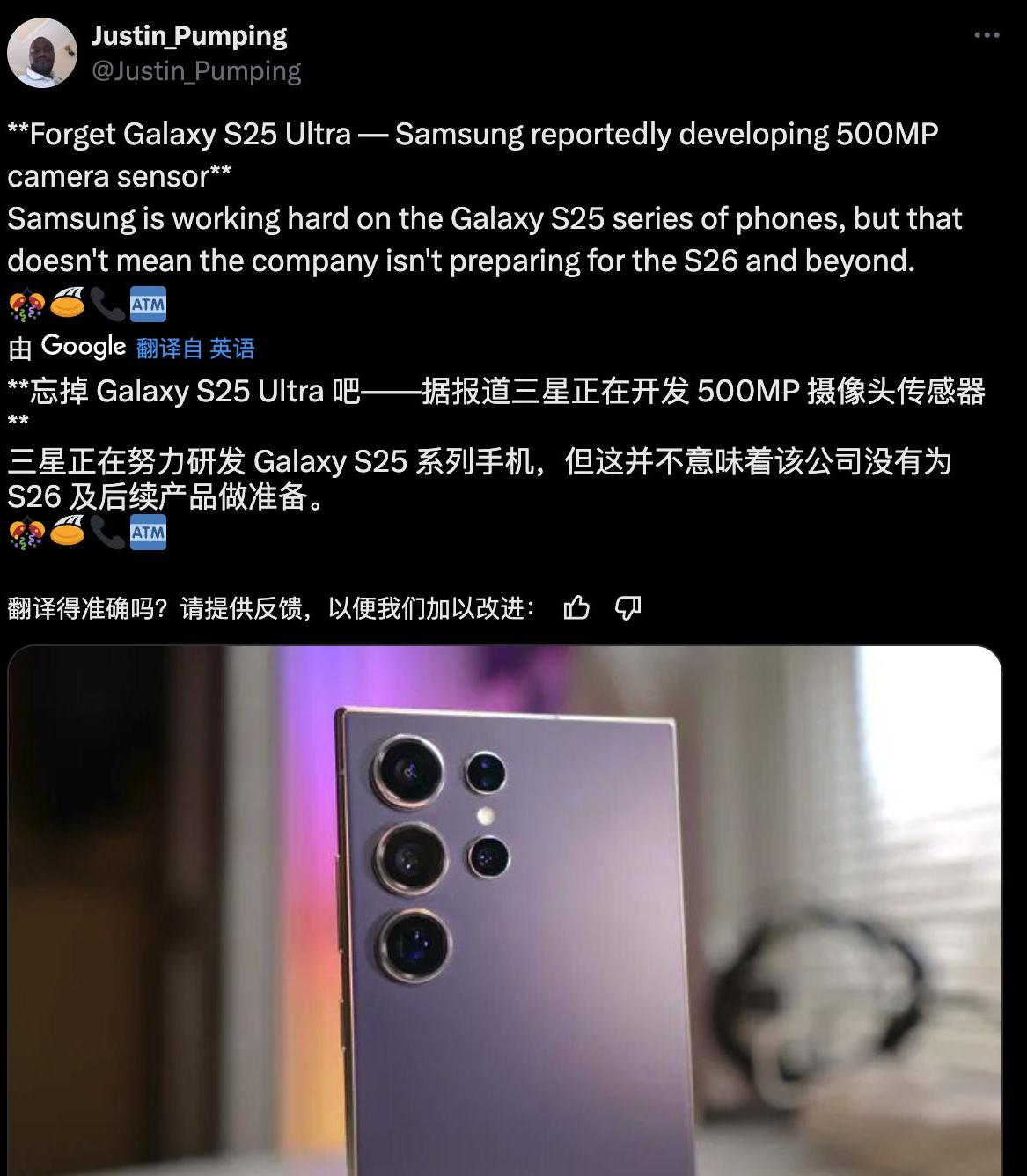The first new smartphone with dual 200MP cameras is coming! Will the pixel arms race make smartphone imaging surpass cameras?
![]() 03/26 2025
03/26 2025
![]() 701
701
100MP is not enough, 200MP is still not enough, and dual 200MP is the next target for smartphone imaging hardware.
According to @DigitalChatStation, domestic smartphone manufacturers are already evaluating the next-generation dual 200MP solution, where both the main and telephoto cameras are 200MP CMOS, with Sony's 200MP main camera CMOS measuring approximately 1/1.1 inches.

(Source: Weibo screenshot)
So far, among the new generation of flagships equipped with Snapdragon 8 Gen2 and Dimensity 9400, the vivo X200 Pro, Xiaomi 15 Ultra, Magic 7 Pro, etc., have all been equipped with 200MP telephoto lenses. According to previous revelations from @DigitalChatStation, at least five manufacturers plan to equip models with the second-generation Snapdragon Gen2 and Dimensity 9500 with 200MP sensors, including sub-brands.
As the supply chain gradually matures and hardware procurement costs decrease, smartphone manufacturers seem to be planning to gradually introduce 200MP sensors to their sub-brands, while flagship phones will adopt the dual 200MP solution to improve shooting capabilities and product competitiveness.
From 110K to dual 200MP, the smartphone pixel race intensifies
In 2000, the world's first camera-equipped mobile phone, the Sharp J-SH04, was released. Although it only had an 110K-pixel CCD sensor, it nevertheless pioneered mobile phone photography. Since then, cameras have almost become an essential selling point for high-end models, and technologies such as optical zoom, xenon flash, and optical image stabilization have gradually been introduced in the mobile phone field.
Pixel count and sensor size, the two critical factors determining image quality, have also been continuously improved. In 2012, Nokia launched the PureView 808 with a 41MP CMOS sensor and a 1/1.2-inch size, ushering in the era of large sensors and high pixel counts for mobile phone photography. In 2014, Panasonic exhibited the Lumix CM1 with a 1-inch large-sensor CMOS, but its thickness of up to 15.2mm made the product somewhat awkward.
The first smartphone equipped with a 100MP camera was the Xiaomi CC9 Pro, launched by domestic smartphone manufacturer Xiaomi in 2019. This phone immediately won first place in DxOMark's mobile phone camera rankings. However, the shooting experience of the Xiaomi CC9 Pro was not ideal, as the ultra-high pixel count placed extremely high demands on the ISP, and the Spectra 350 ISP of the Xiaomi CC9 Pro's processor struggled to process 100MP photos, taking several seconds to capture each image.

(Source: Xiaomi)
Although the initial experience of 100MP did not impress users, it could not stop smartphone manufacturers from pursuing high pixel counts. In 2022, the moto X30 Pro was the first to be equipped with a 200MP main camera, and in 2024, the vivo X100 Ultra was the first to be equipped with a 200MP telephoto lens.
Not only the main camera but also the telephoto and ultra-wide lenses of flagship phones have gradually abandoned the 8MP/13MP "filler" lenses, switching to 50MP lenses as the mainstay. Nowadays, the combination of a main camera + telephoto + ultra-wide lens, all with 50MP, has become the basic configuration for flagship phones, including the Xiaomi 15, OPPO Find X8, and vivo X200.
While flagship phones continue to pursue higher pixel counts, due to the maturity of the supply chain and the decreasing cost of sensors, 100MP main cameras have gradually been introduced to lower-end models. Even the currently priced Redmi Note 13 5G, starting at 899 yuan (initial price of 1099 yuan), is equipped with a 100MP main camera. The upcoming Honor 400 Lite has also been rumored to be equipped with a 100MP main camera.

(Source: Xiaomi Mall screenshot)
Smartphone pixel count has always been a commonly used promotional term by manufacturers. In 2019, the Lenovo Z6 Pro used the slogan "Billion-level Pixel" as a warm-up, although it did not mean the product was equipped with a 100MP CMOS but rather that the combined pixel count of the front and rear cameras exceeded 100MP. In just a few years, entry-level 5G smartphones priced around 1000 yuan can now be equipped with 100MP main cameras, showing how rapidly smartphone CMOS has progressed and that the era of high pixel counts has arrived.
With smartphone manufacturers such as vivo, Xiaomi, and Honor successively using 200MP telephoto lenses on their flagship phones, coupled with the successful penetration of 100MP CMOS into the market, the launch of dual 200MP models naturally follows suit.
Is smartphone imaging closer to replacing cameras?
"A larger sensor size beats all" is a popular saying in the photography circle, meaning that the CMOS size is the decisive factor in a camera's photographic capability, with pixel count being less important. Popular full-frame cameras on JD.com, such as the Sony Alpha 7 IV, only have 33MP, and the Canon EOS RP even has only 26.2MP, showing that cameras do not pursue high pixel counts.
This saying also holds true in the field of smartphone photography. While 200MP offers advantages in resolution, with clear details even after cropping, the small single-pixel size can significantly compromise shooting performance in low-light environments.
For example, the 200MP telephoto lenses of the Xiaomi 15 Ultra and vivo X200 Pro use the Samsung HP9 sensor, with a CMOS size of only 1/1.4 inches and a single-pixel size of only 0.56μm, making them prone to noise and affecting image quality in insufficient light conditions.

(Source: Xiaomi)
For this reason, high-pixel CMOS sensors often use techniques such as 4-in-1, 9-in-1, and 16-in-1 pixel binning to increase the single-pixel size during shooting. Taking the Xiaomi 15 Ultra as an example again, its 200MP telephoto lens supports a 4-in-1 pixel binning scheme, which can increase the single-pixel size to 2.24μm, thereby capturing clear photos in low-light environments with insufficient nighttime light.
Fortunately, the 1/1.1-inch Sony main camera mentioned by @DigitalChatStation has a single-pixel size of approximately 0.8μm, which is already usable. Based on multi-pixel binning technology, this CMOS can further increase the single-pixel size to 3.2μm or even higher, comparable to the 50MP 1-inch CMOS main cameras currently equipped on flagship smartphones.
Smartphones are not the better the higher the pixel count, but high-pixel CMOS sensors can provide resolution that is difficult to achieve with low-pixel CMOS sensors in high-brightness conditions. They can also increase the single-pixel size in low-light environments through multi-pixel binning technology to reduce noise in photos. A 1/1.1-inch + 200MP CMOS will become another boost for smartphone manufacturers to challenge cameras.
AI photography technology allows smartphones to automatically adjust parameters based on the shooting scene and image. In sufficient light, 200MP can be activated to capture high-resolution photos, while in low-light conditions, the 4-in-1 technology can be enabled to increase the single-pixel size and capture clearer photos with less noise, which may become the key to unleashing the value of 200MP.
However, the dual 200MP large-sensor main camera still has two issues: the large space occupied by the module itself and the lens. Images released by vivo product manager Han Boxiao show that the three cameras of the vivo X200 Ultra occupy more than 50% of the upper half of the phone. With both the main and telephoto cameras being 200MP large-sensor CMOS, a larger space is inevitably required, leading to more severe protrusions on flagship phones.

(Source: vivo Han Boxiao)
Secondly, a 200MP photo typically has a size of over 80MB, placing considerable pressure on smartphone storage. Current flagship phones generally have storage capacities ranging from 256GB to 1TB, and the dual 200MP solution may cause Ultra versions of flagship phones to abandon the 256GB option.
Due to cost issues, the dual 200MP solution will likely initially only be available on top-tier Ultra versions of flagship phones, gradually being introduced to larger and mid-tier models as the supply chain matures. A good example is vivo, where the X100 Ultra was the first to be equipped with a 200MP telephoto lens, and the X200 series introduced the 200MP telephoto lens to the larger Pro version.
Moreover, from a marketing perspective, high-pixel CMOS sensors can often become a core selling point of a phone model. The dual 200MP solution for the main and telephoto cameras is obviously more attractive and eye-catching than just a 200MP telephoto lens, and the manufacturer that can first launch a dual 200MP model is expected to gain significant attention and attract consumers.
Dual 200MP arms race, will Xiaomi take the lead again?
Considering shooting time and photo size, current smartphones supporting 100MP or 200MP generally do not enable the high-pixel mode by default. Daily use relies on multi-pixel binning technology, resulting in photos with only 12MP to 50MP, but this does not negate the significance of high pixel counts.
With the support of multi-pixel binning technology, 200MP CMOS sensors can balance high resolution and large single-pixel size advantages. If a low-pixel CMOS sensor wants to capture a 100MP or 200MP photo, it needs to use AI technology to interpolate the image, which inevitably differs from native high-pixel images. While AI photography can reduce shooting difficulty, it is difficult to make up for the hardware gap.
From 110K pixels to dual 200MP, the evolution of smartphone CMOS records the changing needs of consumers, but dual 200MP will not be the end of smartphone CMOS's pursuit of high pixel counts. According to blogger @Justin_Pumping on platform X, Samsung is developing a 500MP CMOS sensor for smartphones.

(Source: Platform X screenshot)
Of course, it is uncertain whether the 500MP CMOS can be successfully developed and launched. However, it is already worth looking forward to which manufacturer will first launch the dual 200MP solution. According to @DigitalChatStation, top Android manufacturers such as Xiaomi, OPPO, vivo, and Honor are all potential candidates.
Xiaomi and vivo have always been relatively aggressive in imaging. Xiaomi CC9 Pro was the first to launch a 100MP main camera, and vivo X100 Ultra was the first to launch a 200MP telephoto lens. Moreover, these two companies often jointly develop new products with smartphone CMOS manufacturers such as Sony and Samsung, making them highly likely candidates to first launch the dual 200MP solution.
The vivo X200 Ultra has been rumored to abandon the commonly used 23mm focal length for the main camera on current smartphones, opting for the 35mm focal length more commonly used by photographers. The next-generation X300 Ultra is likely to continue using the 35mm main camera focal length design. The 35mm focal length will result in a larger protrusion of the smartphone camera module, and if paired with the dual 200MP solution, the degree of protrusion may be difficult to control.
Therefore, I believe that Xiaomi 16 Ultra has the highest possibility of being the first to launch the dual 200MP solution. The Xiaomi 15 Ultra increased its specifications without raising its price, maintaining a high quality-to-price ratio in the high-end market. The next top-tier flagship, the Xiaomi 16 Ultra, is expected to bring more surprises to consumers in terms of both specifications and price.







